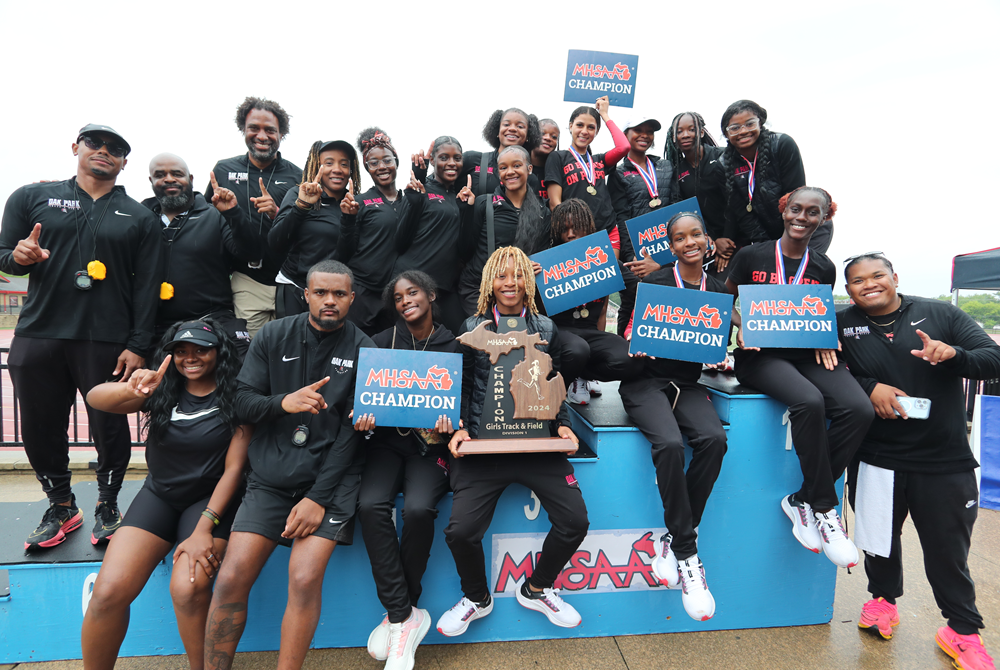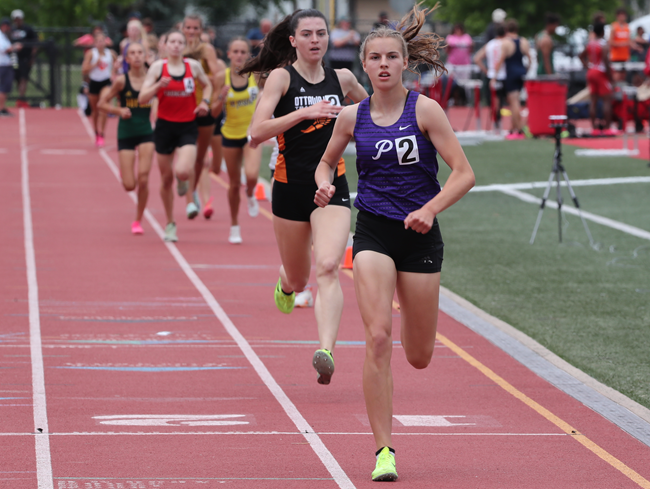
Casting Lines for Future Tournaments
August 12, 2016
By Jack Roberts
MHSAA Executive Director
The MHSAA is best known to the public for the tournaments it conducts to conclude the fall, winter and spring seasons each school year.
These tournaments, the first and largest program of the MHSAA, have survived the Vietnam War, the Korean conflict and two World Wars. They have survived the technology bubble, the housing collapse, the energy crisis and the Great Depression.
MHSAA tournaments existed at the dawn of aviation and at the time of our nation’s lunar landing. Popes, presidents and governors have changed and changed again and again, and MHSAA tournaments roll on year after year.
But the sense of tradition and permanence and inevitability of MHSAA tournaments doesn’t dissuade us from asking questions about our tournaments, even some of the most basic questions. Here are two.
Question #1
I have long been and will always be an advocate for a Ryder Cup format for the MHSAA Golf Finals, and a team tennis approach to the MHSAA Tennis Finals; but 90 years of tradition is hard to overcome. Might this be a more exciting format? Could it be co-ed? Could it reverse the decline in boys tennis participation, and increase girls golf participation? Wouldn’t it be fun to try?
Periodically, the International Olympic Committee requires each of the designated Olympic sports to defend its status, to state its case why the sport should remain a part of the Olympic program. Then, after a series or votes that retain one sport at a time, the IOC drops the sport that makes the weakest case. It does so to make room for one of the previously unlisted sports that makes the best case for inclusion.
This would appear to keep the existing Olympic sports on their toes, and to keep the Olympic movement fresh and reflective of modern trends in sports.
While I would not enjoy the controversy, I can see the potential for some positive results if the MHSAA were to invoke the same policy for determining the 14 tournaments it will provide for girls and the 14 for boys.
This might cause us to consider more deeply what a high school sport should look like, or at least what an MHSAA tournament sport should stand for.
On the one hand, we might be inclined to drop tournaments for those sports that involve mostly non-faculty coaches and non-school venues, or require cooperative programs to generate enough participants to support a team, or resort almost entirely to non-school funding, or cater to individuals more than teams.
Or perhaps this process would cause policymakers to forget traditional thinking and ask: “In this day and age, should we shake off traditional notions of sport and consider more where modern kids are coming from?” That might mean fewer team sports and more individual sports, more “extreme” sports like snowboarding and skateboarding, and more lifetime sports, meaning not just golf and tennis and running sports, but also fishing and even shooting sports.
Currently, MHSAA policy states that the MHSAA will consider sponsorship of a tournament series for any sport which 64 member schools conduct on an interscholastic basis as a result of action by the governing boards of those schools.
Should the only question be how many schools sponsor a sport, or must an activity also have certain qualities and/or avoid certain “defects?” What should an MHSAA tournament sport look like and stand for?
Question #2
Bristling from criticism that his association is a money-grabbing exploiter of children, my counterpart in another state said, “If we were running our programs just to make money, we would do very many things very differently.” I knew exactly what he meant.
Because we care about the health and welfare of students, because we mean what we say that the athletic program needs to maximize the ways it enhances the school experience while minimizing academic conflicts, and because we try to model our claim that no sport is a minor sport when it comes to its potential to teach young people life lessons, we operate our programs in ways that make promoters, marketers and business entrepreneurs laugh, cry or cringe.
If money were the only object, we would seed and select sites to assure the teams that attracted the most spectators had the best chance to advance in our tournaments, regardless of the travel for any team or its fan base. If money were the only object, we would never schedule two tournaments to overlap and compete for public attention, much less tolerate three or four overlapping events. If money were the only object, we would allow signage like NASCAR events and promotions like minor league baseball games.
Those approaches to event sponsorship may not be all wrong; they’re just not all right for us. And we will live with the consequences of our belief system.
During a typical school year, more than 20 percent of the MHSAA’s 2,097 District, Regional and Final tournaments lose money. Not a single site in golf, skiing or tennis makes a single penny. In no sport did every District, Regional and Final site have revenue in excess of direct expenses.
In fact, in only three sports – boys and girls basketball and football – is revenue so much greater than direct expenses overall that it helps to pay for all the other tournaments in which the MHSAA invests.
That’s right: invests. When we present our budget to our board, we talk about the MHSAA’s investment in providing tournament opportunities in all those sports and all those places that cannot sustain the cost of those events on their own. How much is this investment worth to students, schools and society?
These two are core questions that require our focus far in advance of talk about scheduling, site selection, seeding and the myriad matters that too often hijack our time and attention.

Oak Park, Returning Individual Champs Lead Chase Again at Star-Filled Finals
By
Steve Vedder
Special for MHSAA.com
June 1, 2024
Abby Russell has no problem throwing as the favorite with everyone else hoping to catch her.
In fact, the Allen Park senior embraces summoning up her best efforts in both the discus and shot put every time she lines up to throw. Russell said she's never equated success with the pressure of being a state champion.
"To be honest, no," said Russell, who closed out a stellar career by winning those two events at Saturday's Lower Peninsula Division 1 Finals at East Kentwood. "I just focus on myself. Going to see a sports psychologist has helped me a lot with that. We talk about the work you have to put in, and (success) being a consistency thing."
Whether it's pure talent or seeking professional guidance or the ability to deal with pressure, Russell finished off an outstanding career in winning the discus (156-6) and the shot (46-10) on Saturday. The two titles are added to a first as a sophomore and third as a junior in the shot. She's now a three-time champ in the discus.
The wins at East Kentwood were also personally rewarding to Russell, who didn't place in the shot as a freshman at Falcon Stadium. It's one of the few places where the University of Michigan-bound Russell figures she could have done better.
"I was real bad as a freshman, so I was happy to get back here again," she said. "I had a great time back then. I just didn't do what I wanted."
While Russell was among those dominating the individual meet Saturday, Oak Park was sweeping its way to a team title. The Knights finished with 88 points to easily outdistance runner-up Ann Arbor Pioneer's 42. Detroit Renaissance was third with 35 points, East Kentwood was fourth with 34 and Saginaw Heritage had 30.
Oak Park coach Brandon Jiles, whose team collected its eighth Finals title under his leadership, said he wasn't sure what type of showing a young team would make Saturday. Of the 35 athletes on the roster, just three are seniors.
Still, Jiles thought the team would be in the hunt along with Pioneer, Renaissance and Detroit Cass Tech. At least part of the success was winning the 800 (1:38.10), 400 (47.53) and 1,600 (3:47.99) relays. The other firsts were by senior Morgan Roundtree in the 300 hurdles (41.31), freshman Nevaeh Burns in the 400 (55.02) and senior Kylee King (2:10.53) in the 800.
 "We thought we had a shot. We just take it one event at a time and do what we have to do. We only have three seniors, but they're really good kids. We'll have some good girls back next year, and they know they'll have to step up and score," Jiles said.
"We thought we had a shot. We just take it one event at a time and do what we have to do. We only have three seniors, but they're really good kids. We'll have some good girls back next year, and they know they'll have to step up and score," Jiles said.
"I'm a very competitive person when I see other teams that are good. I think the girls are like that too. We're ready when it comes to championship time."
Roundtree said her two chief goals at the meet were accomplished. She wanted to join a long list of successful Oak Park sprinters while also leading a young team to a championship.
"I want to motivate my teammates, and I think I was able to do that," said Roundtree, whose 300 time is ninth best in the country. "We've had some good sprinters here, and I really wanted to become one of them."
Among the other champions was Lena Cleveland of Rochester, who went from finishing fourth in the long jump a year ago to winning (18-2) that event Saturday. Cleveland is a former sprinter who traded the 100 and 200 for the long jump a couple of years ago.
"I wanted to try the long jump, and it's worked out," she said. "I put in a lot of hard work over the summer and in indoor. I also worked hard in strength training in the gym. I didn't used to have access to a (long jump) pit, but I was able to put in the work."
Rachel Forsyth of Ann Arbor Pioneer won the 1,600 (4:38.28) and 3,200 (10:15.57) to cap an outstanding four-year career. A two-time cross country Finals champ, Forsyth overcame illness to win the 1,600 a year ago. She was coming off a trip to the Trial of Miles meet in New York a couple of weeks ago, but said the Finals featured virtually no mental letdown.
"Maybe a little, but you can't control it," she said. "You can only control what you're doing that day. And I think I ran well. It was great because my sister was in the same three events I was in in 2017."
The other champions Saturday were Kamryn Tatum of West Bloomfield in the 200 (24.63), Brooke Bowers of Grand Rapids Forest Hills Central in the pole vault (12-9), Madison Morson of Salem in the high jump (5-10), Maya Rollins of Ann Arbor Pioneer (13.86) in the 100 hurdles, Willow Mason of Saginaw Heritage in the 200 (24.66) and Keyanna O'Tey of Sturgis in the 100 (12.08). West Ottawa won the 3,200 relay (9:00.27), and Fenton sophomore Molly Katic (100), Clarkston freshman Allison Thurman (200) and Sturgis freshman Vivian Massey (shot put) were the adaptive event champions.
PHOTOS (Top) Oak Park celebrates its latest LP Division 1 team championship Saturday at East Kentwood. (Middle) Ann Arbor Pioneer’s Rachel Forsyth leads the pack in the 1,600. (Click for more from John Brabbs/RunMichigan.com.)

